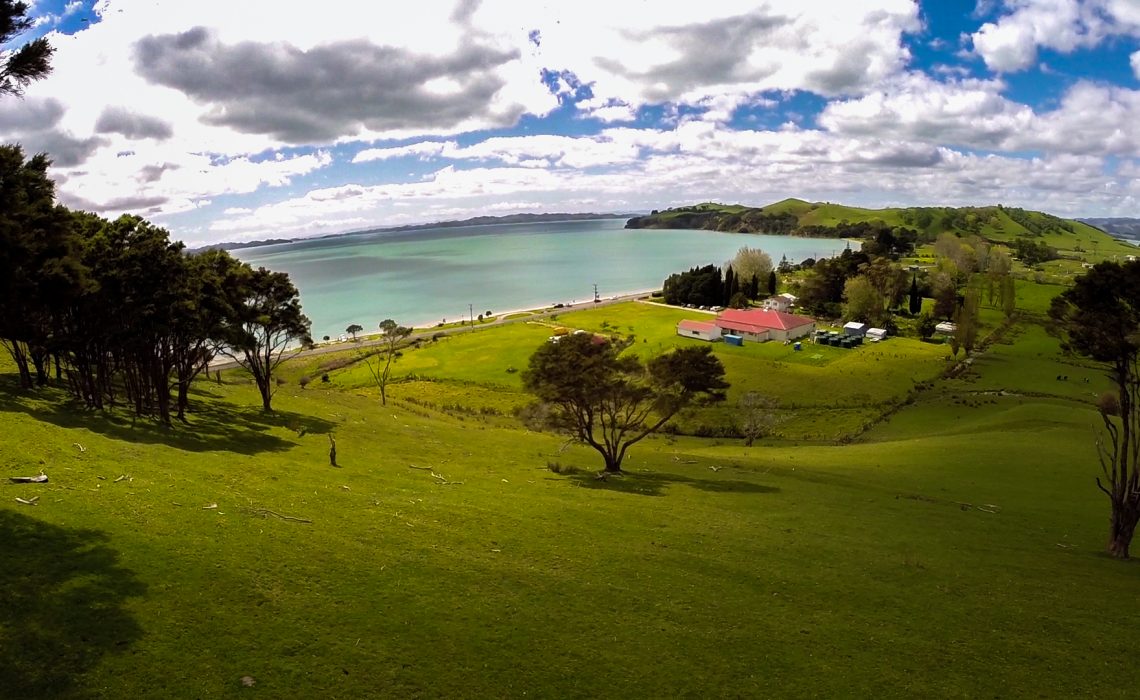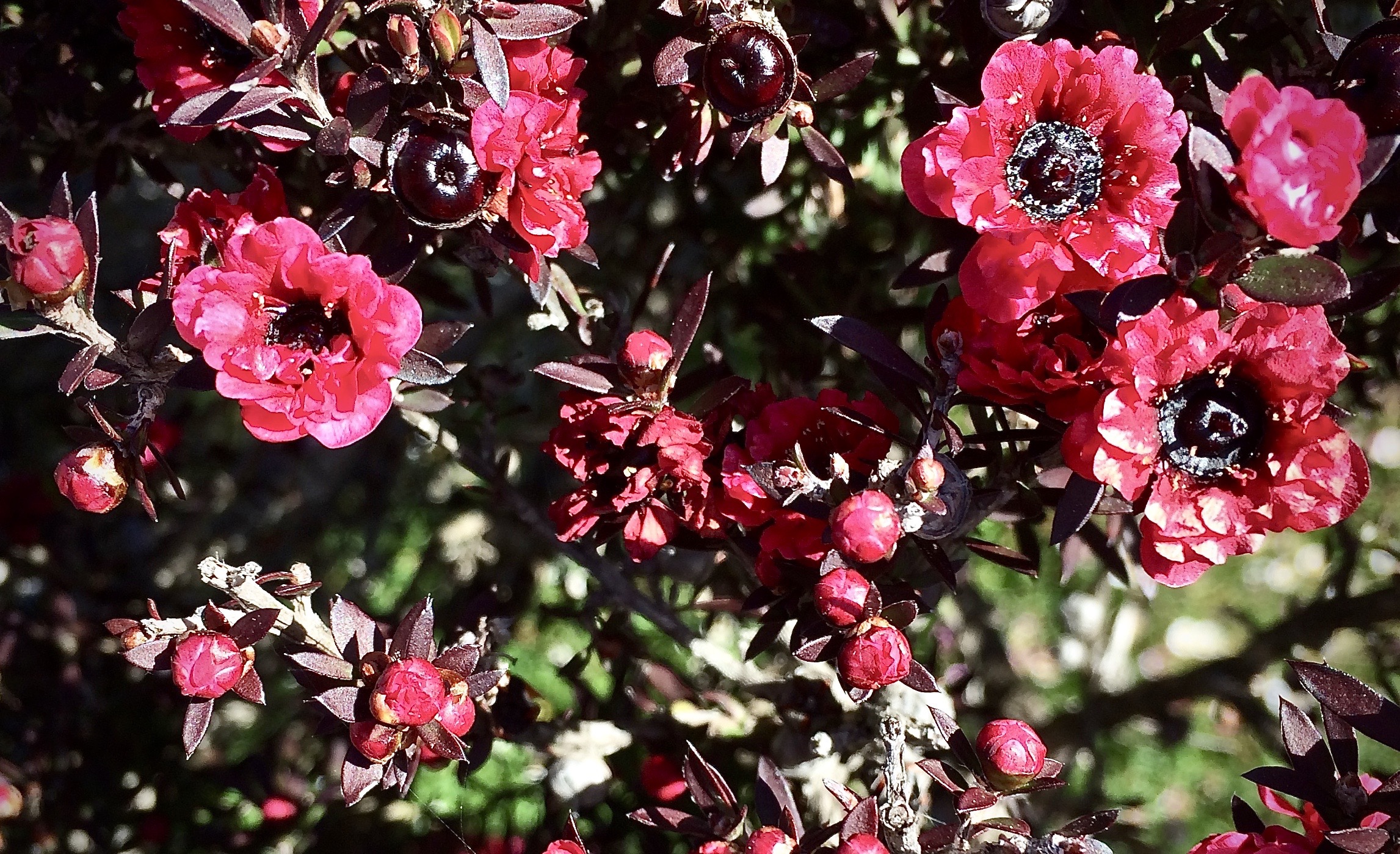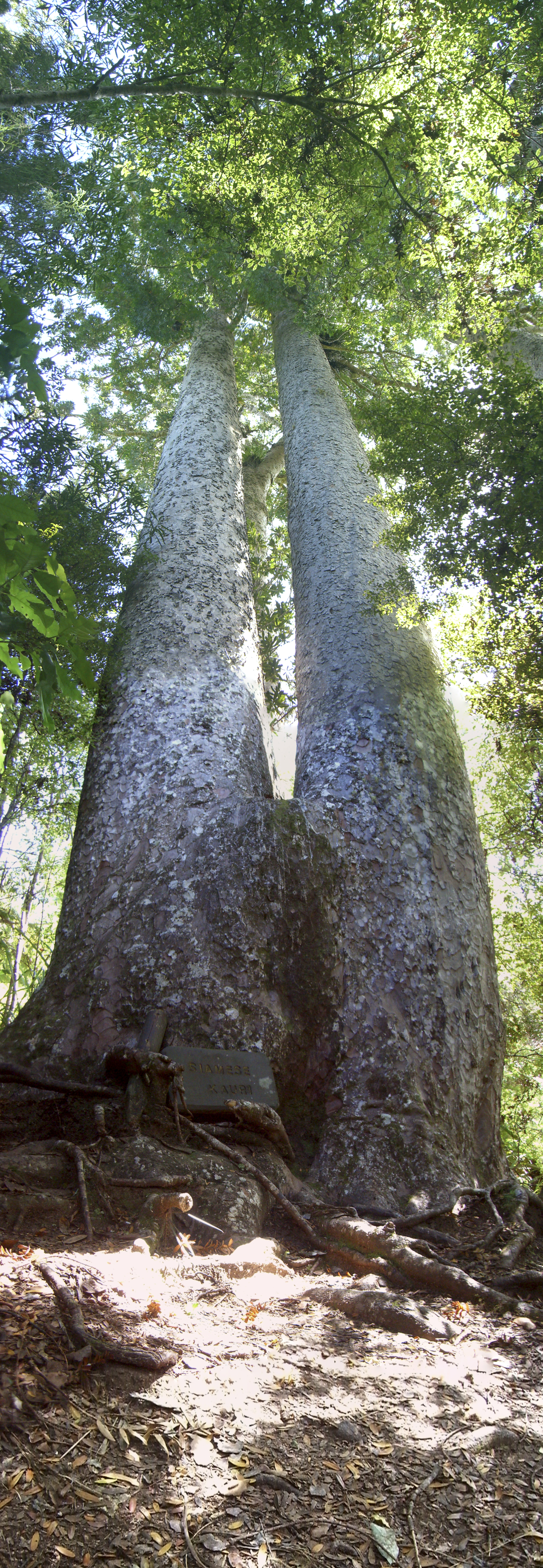|
Lucas Creek
Lucas Creek is a stream and tidal estuary of Upper Waitematā Harbour in the Auckland Region of New Zealand's North Island. It flows through Albany on the western North Shore, and enters the Upper Waitematā Harbour between Pāremoremo and Greenhithe. Geography Lucas Creek is an arm of the Upper Waitematā Harbour. The creek begins as a freshwater stream, flowing south-west from Fairview Heights, The Lucas Creek Waterfall is found on a section of the stream near Gills Road in Albany, After flowing through Albany, Lucas Creek is joined by the Ōteha Stream. After widening to a tidal inlet and passing the suburbs of Lucas Heights and Schnapper Rock, the creek is joined by a second tributary, Te Wharau Creek, at Greenhithe. The creek enters the Upper Waitematā Harbour between Pāremoremo and Greenhithe, opposite to Herald Island. Some sources describe the freshwater section as the Lucas Stream, and the estuary as the Lucas Creek. During the Last Glacial Maximum (known ... [...More Info...] [...Related Items...] OR: [Wikipedia] [Google] [Baidu] |
Albany, New Zealand
Albany ( mi, Ōkahukura) is one of the northernmost suburbs of the contiguous Auckland metropolitan area in New Zealand. It is located to the north of the Waitematā Harbour, northwest of the Auckland city centre. The suburb is in the Albany ward, one of the thirteen administrative divisions of Auckland Council. Much of the land to the north of Albany is still semi-rural. The Māori name for the area was Okahukura (literally, 'place of rainbows' or 'place of butterflies'). The town was originally known as Lucas Creek. By 1890 it was a fruit-growing area and in that year it was renamed 'Albany' after the fruit-growing district called 'Albany' in Australia, pronounced with a short 'a' as in ''Albert''. The name ''Albany'' derives from ''Alba'' (Gaelic for Scotland) and its Latinisation. City planning In 2005, there were plans to turn a major swath of Albany into a planned mini-urban centre, described as a "happy mix of businesses, hotels, shops, apartments, and entertainment (i ... [...More Info...] [...Related Items...] OR: [Wikipedia] [Google] [Baidu] |
Auckland Council
Auckland Council ( mi, Te Kaunihera o Tāmaki Makaurau) is the local government council for the Auckland Region in New Zealand. It is a territorial authority that has the responsibilities, duties and powers of a regional council and so is a unitary authority, according to the Local Government (Auckland Council) Act 2009, which established the council. The governing body consists of a mayor and 20 councillors, elected from 13 wards. There are also 149 members of 21 local boards who make decisions on matters local to their communities. It is the largest council in Oceania, with a $3 billion annual budget, $29 billion of ratepayer equity, and 9,870 full-time staff as of 30 June 2016. The council began operating on 1 November 2010, combining the functions of the previous regional council and the region's seven city and district councils into one "super council" or "super city". The council was established by a number of Acts of Parliament, and an Auckland Transition Agency, als ... [...More Info...] [...Related Items...] OR: [Wikipedia] [Google] [Baidu] |
Ngā Oho
Ngā Oho, also known as Ngā Ohomatakamokamo-o-Ohomairangi, is the name of a historical iwi (tribe) of Māori who settled in the Auckland Region. In the 17th century, Ngā Oho and two other tribes of shared heritage, Ngā Riki and Ngā Iwi, formed the Waiohua confederation of tribes. History The name Ngā Oho was one of the earlier tribal names used by Tāmaki Māori people, descended from the legendary ''Tainui'' tohunga/navigator Rakatāura (also known as Hape), and ''Te Arawa''. Ngā Oho was a name that was used as a unifying name for Tainui peoples in Tāmaki Makaurau. By the 14th century, Ngā Oho had settled in the Waitākere Ranges area. Ngā Oho's rohe once spanned from Cape Rodney/Okakari Point near Leigh to Tauranga. The iwi is named either after the historical rangatira Ohomairangi or Ohomatakamokamo. Ohomatakamokamo was an ariki who lived at Rarotonga / Mount Smart, conquering the Tāmaki Makaurau area. Ohomatakamokamo's descendants settled on the Tāmaki isthmus, ... [...More Info...] [...Related Items...] OR: [Wikipedia] [Google] [Baidu] |
Ngāi Tai Ki Tāmaki
Ngāi Tai ki Tāmaki is a Māori tribe that is based in the area around Clevedon, part of the Auckland region (''Tāmaki'' in the Māori language). It is one of the twelve members of the Hauraki Collective of tribes. The founding ancestors of Ngāi Tai ki Tāmaki came to New Zealand in the ''Tainui'' migration canoe and left it when it was dragged across Te Tō Waka, the portage from the Tāmaki River to the Manukau Harbour. Their descendants occupied parts of the Hauraki Gulf, including east Auckland as far inland as Otara and Maungarei, as well as Clevedon, Maraetai and Howick. Te Irirangi Drive, a major highway in Manukau City, is named after one of their ''rangatira'' (chiefs), Tara Te Irirangi. Ngāi Tai has a marae at Umupuia Beach, between Maraetai and Clevedon. They also use the Ngāti Tamaoho marae at Karaka. In 2015 the Crown settled with Ngāi Tai ki Tāmaki over historic grievances, including both financial and cultural compensation. See also *List of iwi ... [...More Info...] [...Related Items...] OR: [Wikipedia] [Google] [Baidu] |
Tainui (canoe)
In Māori tradition, ''Tainui'' was one of the great ocean-going canoes in which Polynesians migrated to New Zealand approximately 800 years ago. In Māori tradition, the ''Tainui'' waka was commanded by the chief Hoturoa, who had decided to leave Hawaiki because over-population had led to famine and warfare. The crew of the ''Tainui'' were the ancestors of the iwi that form the Tainui confederation. Crafting The Tainui waka (canoe) was made from a great tree, at a place in Hawaiki known then as Maungaroa, on the spot where a stillborn child had been buried. According to Te Tāhuna Herangi the waka was named after the child who had been called Tainui. The canoe was made by Rakatāura, an expert boat builder in the tradition of Rātā, or according to Wirihana Aoterangi by Rātā himself. It was built with three adzes (''toki''): ''Hahau-te-pō'' ('Chop the night-world') to chop down the tree, ''Paopao-te-rangi'' ('Shatter the heavens') to split the wood, and ''Manu-tawhi ... [...More Info...] [...Related Items...] OR: [Wikipedia] [Google] [Baidu] |
Waka Kotahi NZ Transport Agency
Waka Kotahi, or the New Zealand Transport Agency, (always abbreviated as NZTA), superseded by is a New Zealand Crown entity tasked with promoting safe and functional transport by land, including the responsibility for driver and vehicle licensing, and administering the New Zealand state highway network. It was established as the New Zealand Transport Agency on 1 August 2008 by the Land Transport Management Amendment Act 2008, merging Transit New Zealand with Land Transport New Zealand. means 'one vessel' and is intended to convey the concept of "travelling together as one". Public data access The transport agency stores registration, licensing and warrant of fitness details for any road-registered vehicle within New Zealand, including cars, motorbikes, trailers, trucks and earthmoving or agricultural machinery. Any member of the public can query the transport agency's database by making a request using the licence plate or VIN at an NZ Post outlet, or by using a veh ... [...More Info...] [...Related Items...] OR: [Wikipedia] [Google] [Baidu] |
New Zealand Sand Flounder
The New Zealand sand flounder (''Rhombosolea plebeia'') is a righteye flounder of the genus ''Rhombosolea'', found around New Zealand in shallow waters down to depths of 100 m. Common names New Zealand dab, pātiki, diamond, tinplate, square flounder. Description Like other flatfish, the larval sand flounder begins its life with an eye on each side of its head and a round body shape, swimming upright through the midwater.Graham, D. H. (1953). A Treasury of New Zealand Fish. Wellington: Hutcheson, Bowman and Stewart Ltd. As it grows out of this larval stage entering the juvenile stage one eye moves to the right side leaving the other blind and it takes on a flat diamond shape swimming flat/parallel to the ground. On the right side, the fish is a greenish brown dark colour or grey with faint mottling and on the left side (the side it lies on without eyes) it is white.Paul, L. (1986). New Zealand Fishes. Auckland: Reed Books. The average length of an adult sand flounder is 25–35&n ... [...More Info...] [...Related Items...] OR: [Wikipedia] [Google] [Baidu] |
Waka Kotahi
Waka Kotahi, or the New Zealand Transport Agency, (always abbreviated as NZTA), superseded by is a New Zealand Crown entity tasked with promoting safe and functional transport by land, including the responsibility for driver and vehicle licensing, and administering the New Zealand state highway network. It was established as the New Zealand Transport Agency on 1 August 2008 by the Land Transport Management Amendment Act 2008, merging Transit New Zealand with Land Transport New Zealand. means 'one vessel' and is intended to convey the concept of "travelling together as one". Public data access The transport agency stores vehicle registration, registration, vehicle licence, licensing and warrant of fitness details for any road-registered vehicle within New Zealand, including cars, motorbikes, trailers, trucks and earthmoving or agricultural machinery. Any member of the public can query the transport agency's database by making a request using the licence plate or Vehicle Ident ... [...More Info...] [...Related Items...] OR: [Wikipedia] [Google] [Baidu] |
Tāmaki Māori
Tāmaki Māori are Māori ''iwi'' and ''hapū'' (tribes and sub-tribes) who have a strong connection to Tāmaki Makaurau (the Auckland Region), and whose rohe was traditionally within the region. Among Ngā Mana Whenua o Tāmaki Makaurau (the Māori tribes of Auckland), also known as the Tāmaki Collective, there are thirteen iwi and hapū, organised into three rōpū (collectives), however Tāmaki Māori can also refer to subtribes and historical iwi not included in this list. Ngāti Whātua Rōpū Ngāti Whātua descend from the '' Māhuhu-ki-te-rangi'' waka, which landed north of the Kaipara Harbour. The rōpū includes Ngāti Whātua o Kaipara, Ngāti Whātua Ōrākei and Te Rūnanga o Ngāti Whātua. Te Rūnanga o Ngāti Whātua is a Māori Trust Board formed in the mid 2000s to represent the interests of Ngāti Whātua iwi and hapū collectively, including those outside of Ngāti Whātua o Kaipara and Ngāti Whātua Ōrākei. The rūnanga represents Ngā Oho, Ngāi Tāh ... [...More Info...] [...Related Items...] OR: [Wikipedia] [Google] [Baidu] |
Leptospermum Scoparium
''Leptospermum scoparium'', commonly called mānuka, () mānuka myrtle, New Zealand teatree, broom tea-tree, or just tea tree, is a species of flowering plant in the myrtle family Myrtaceae, native to New Zealand (including the Chatham Islands) and south-east Australia. Its nectar produces Mānuka honey. Description Mānuka is a prolific shrub-type tree and is often one of the first species to regenerate on cleared land. It is typically a shrub growing to tall, but can grow into a moderately sized tree, up to or so in height. It is evergreen, with dense branching and small leaves long and broad, with a short spine tip. The flowers are white, occasionally pink, – rarely up to – in diameter, with five petals. The wood is tough and hard. Mānuka is often confused with the related species kānuka (''Kunzea ericoides'') – the easiest way to tell the difference between the two species in the field is to feel their foliage – mānuka leaves are prickly, while kānuka lea ... [...More Info...] [...Related Items...] OR: [Wikipedia] [Google] [Baidu] |
Agathis Australis
''Agathis australis'', commonly known by its Māori name kauri (), is a coniferous tree in the family ''Araucariaceae'', found north of 38°S in the northern regions of New Zealand's North Island. It is the largest (by volume) but not tallest species of tree in New Zealand, standing up to 50 m tall in the emergent layer above the forest's main canopy. The tree has smooth bark and small narrow leaves. Other common names to distinguish ''A. australis'' from other members of '' Agathis'' are southern kauri and New Zealand kauri. With its novel soil interaction and regeneration pattern it can compete with faster growing angiosperms. Because it is such a conspicuous species, forest containing kauri is generally known as kauri forest, although kauri need not be the most abundant tree. In the warmer northern climate, kauri forests have a higher species richness than those found further south. Kauri even act as a foundation species that modify the soil under their canopy to cre ... [...More Info...] [...Related Items...] OR: [Wikipedia] [Google] [Baidu] |
National Institute Of Water And Atmospheric Research
The National Institute of Water and Atmospheric Research or NIWA ( mi, Taihoro Nukurangi), is a Crown Research Institute of New Zealand. Established in 1992, NIWA conducts research across a broad range of disciplines in the environmental sciences. It also maintains nationally and, in some cases, internationally important environmental monitoring networks, databases, and collections. , NIWA had 697 staff spread across 14 sites in New Zealand and one in Perth, Australia. Its head office is in Auckland, with regional offices in Hamilton, Wellington, Christchurch, Nelson, and Lauder (Central Otago). It also has small field teams, focused mostly on hydrology, stationed in Bream Bay, Lake Tekapo, Rotorua, Napier, Whanganui, Greymouth, Alexandra, and Dunedin. NIWA maintains a fleet of about 30 vessels for freshwater, marine, and atmospheric research. Mission statement "NIWA's mission is to conduct leading environmental science to enable the sustainable management of natural res ... [...More Info...] [...Related Items...] OR: [Wikipedia] [Google] [Baidu] |






